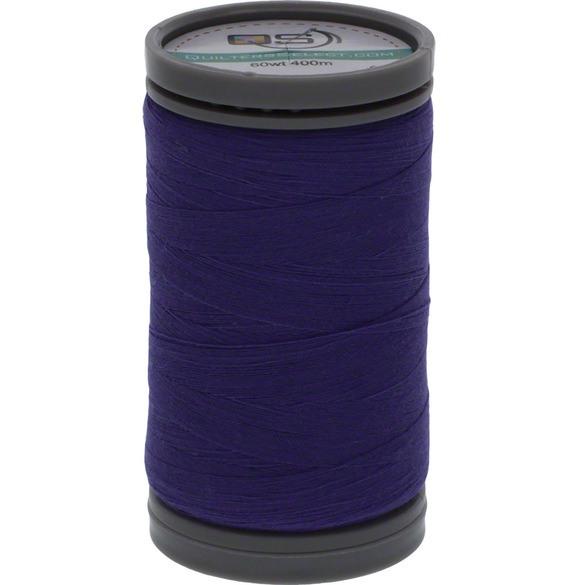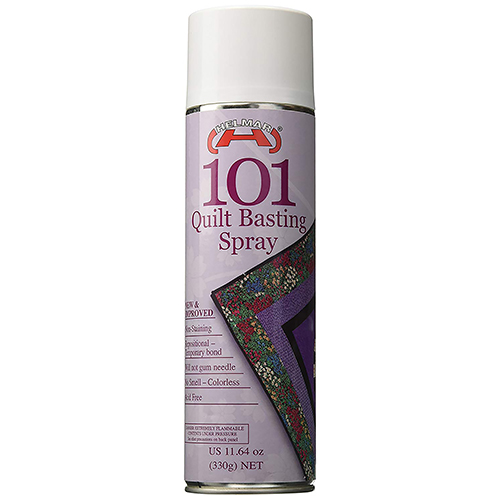
It looks like there is a little hill there, but it didn’t develop into a tuck. Believe me, not all walking feet are created equal! When you return to your starting point (usually a corner), you should not have any puckers or tucks at the end. You can also tell how efficient your walking foot is at this point. Stitch within 1/4″ from the outside edge, through all layers. Make sure you have a walking foot attached to your machine and set your stitch length to a long stitch (5.0 on computerized machines and about 6 stitches per inch on “vintage” models). You will have to un-tape your quilt backing from the table or floor before you do this. The other way to secure the edges is to use your sewing machine. The first method involves pinning along the edges about 3 – 4 inches apart and 1/4″ in from the edge. This gives added stability to the outside edges which tend to get manipulated a bunch during the quilting process. You’re almost done! Now, I like to baste the edges of the quilt top with safety pins or using my machine (walking foot attached). Repeat steps 7 and 8 for the other half of the quilt.ġ0. If you’re working alone, repeat with the other corner/side.ĩ. Use one hand to hold the corner up and the other hand to smooth the quilt top from the center out to the sides. Make sure you don’t pull the corners or edges as you’re smoothing it down. Carefully lay the quilt top over the sprayed batting. This gives you a more even spray and better adhesion since you don’t have seam allowances and thread getting in the way.Ĩ. You will always be spraying the batting rather than the fabric. Peel back half of the quilt top and spray the exposed batting side using the same method as before. I try to smooth it out on the fabric grain so that nothing stretches or distorts.ħ. Lay the quilt top over the batting/backing layer and smooth it out. Repeat steps 3 and 4 for the other half of the batting.Ħ. So this isn’t exactly how it’s supposed to look.ĥ. However, I usually do this on my own, so I work with one corner/side at a time (as you can see from the following picture).Īctually, I’m holding the camera with the one hand that is supposed to be holding the corner of the batting. This is easier to do with two people – one holding each corner of the batting. Since it’s temporary and re-positionable, you can readjust if any wrinkles form while doing this. Lift the batting that just got sprayed and smooth it down over the backing as it touches the backing fabric. The spray does not like to adhere to polyester.Ĥ.

For cotton blends and wool, use a little more.For 100% cotton batting, use spray sparingly.I gauge this by the type of batting I use. Optimally you want to use as little adhesive as possible to do the job. Hold the can about 12 inches away and spray an even layer. Peel back half of the batting and spray the batting with temporary spray adhesive. They should both be about the same size (which should be 2 – 3 inches larger all the way around your quilt top).ģ. Next you will lay your batting on top of the backing and smooth it out. You want the backing to be smooth and flat, but not tight.See the before and after pictures below.Ģ.


Always smooth from the center out to the edges. Depending on the size of your backing, you will need to add tape in between (about 12″ apart) the corners and sides. Do the same thing to the remaining two sides. You want to smooth your backing out and tape the middle of one side and then the opposite side. I use my kitchen table for smaller quilts and my hardwood floor for larger quilts. To get started, you will need to lay your backing right side down on a smooth surface. Temporary spray adhesive (I highly recommend 505 Spray and Fix), painters tape or other masking tape, safety pins and something to clean up the over-spray with (I use De-Solv-it).ġ. You will need a few items in order to get started. The over-spray can get surrounding area sticky (don’t be lazy, clean with a rag).It has a fume to it (open a window, wear a mask).It can gum up your needle while quilting (clean w/ an alcohol swab or lick your finger and swipe clean!).It’s temporary! Will wash out when you’re finished.Doesn’t add additional weight to the quilt.My absolute favorite way to baste a quilt together is by using temporary spray adhesive. Then you need to baste these layers together before you can start quilting. Once you have finished a quilt top, you need to make a quilt sandwich using the finished top, batting (for the middle) and backing fabric.


 0 kommentar(er)
0 kommentar(er)
